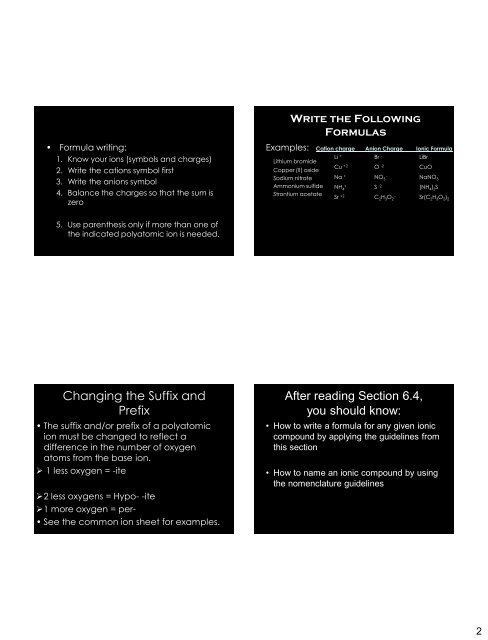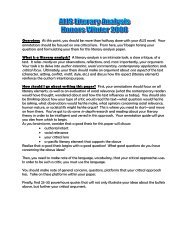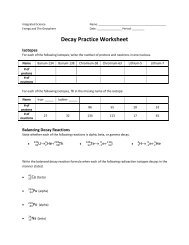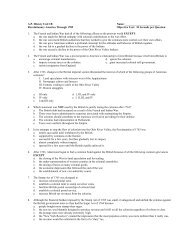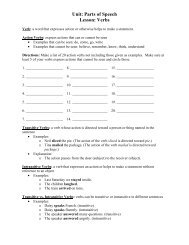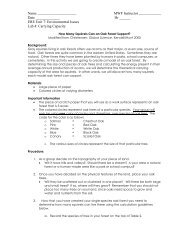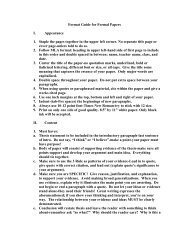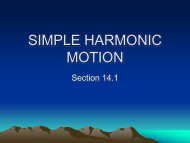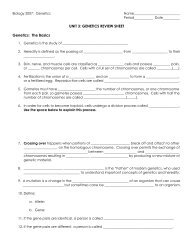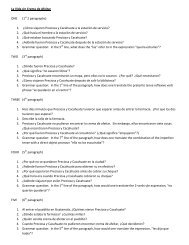Ionic Compounds - Arapahoe High School
Ionic Compounds - Arapahoe High School
Ionic Compounds - Arapahoe High School
You also want an ePaper? Increase the reach of your titles
YUMPU automatically turns print PDFs into web optimized ePapers that Google loves.
Write the Following<br />
Formulas<br />
• Formula writing:<br />
1. Know your ions (symbols and charges)<br />
2. Write the cations symbol first<br />
3. Write the anions symbol<br />
4. Balance the charges so that the sum is<br />
zero<br />
Examples:<br />
Lithium bromide<br />
Copper (II) oxide<br />
Sodium nitrate<br />
Ammonium sulfide<br />
Strontium acetate<br />
Cation charge Anion Charge <strong>Ionic</strong> Formula<br />
Li + Br -<br />
Cu +2 O -2<br />
Na + NO 3<br />
-<br />
NH 4<br />
+<br />
S -2<br />
Sr +2 C 2 H 3 O 2<br />
-<br />
LiBr<br />
CuO<br />
NaNO 3<br />
(NH 4 ) 2 S<br />
Sr(C 2 H 3 O 2 ) 2<br />
5. Use parenthesis only if more than one of<br />
the indicated polyatomic ion is needed.<br />
Changing the Suffix and<br />
Prefix<br />
• The suffix and/or prefix of a polyatomic<br />
ion must be changed to reflect a<br />
difference in the number of oxygen<br />
atoms from the base ion.<br />
‣ 1 less oxygen = -ite<br />
‣2 less oxygens = Hypo- -ite<br />
‣1 more oxygen = per-<br />
• See the common ion sheet for examples.<br />
After reading Section 6.4,<br />
you should know:<br />
• How to write a formula for any given ionic<br />
compound by applying the guidelines from<br />
this section<br />
• How to name an ionic compound by using<br />
the nomenclature guidelines<br />
2


